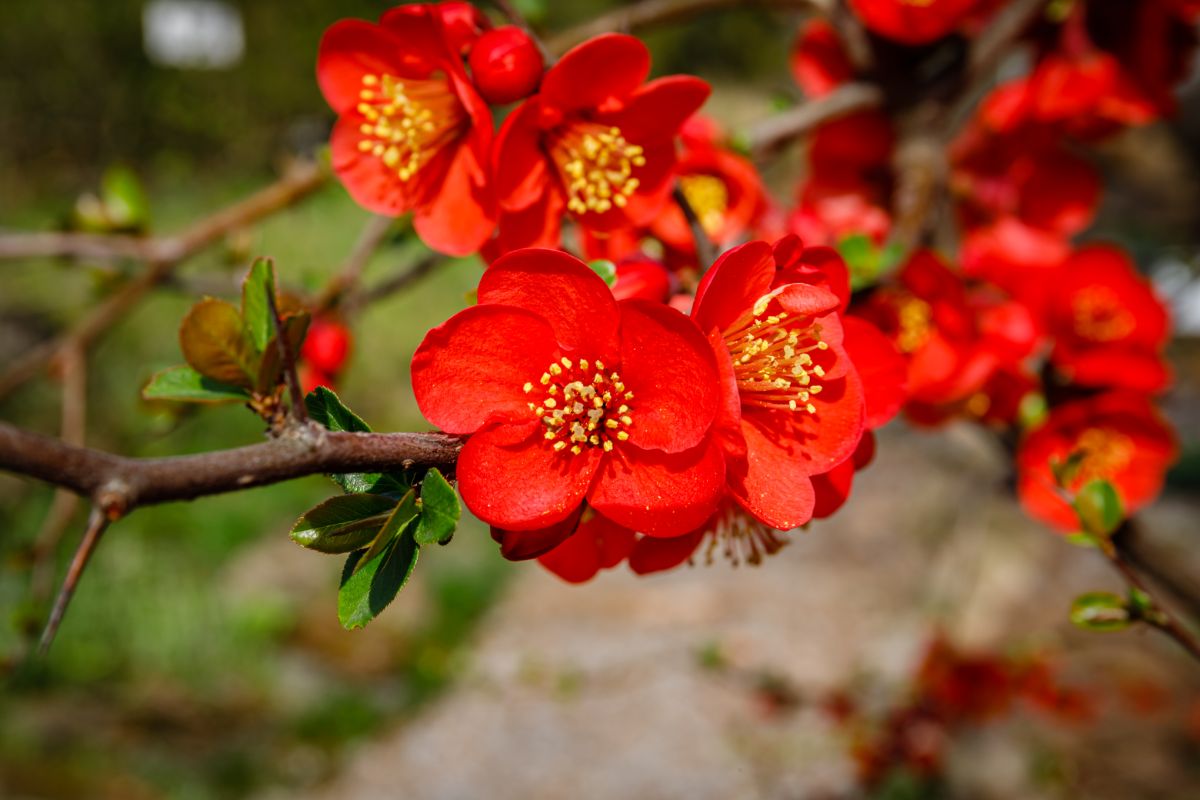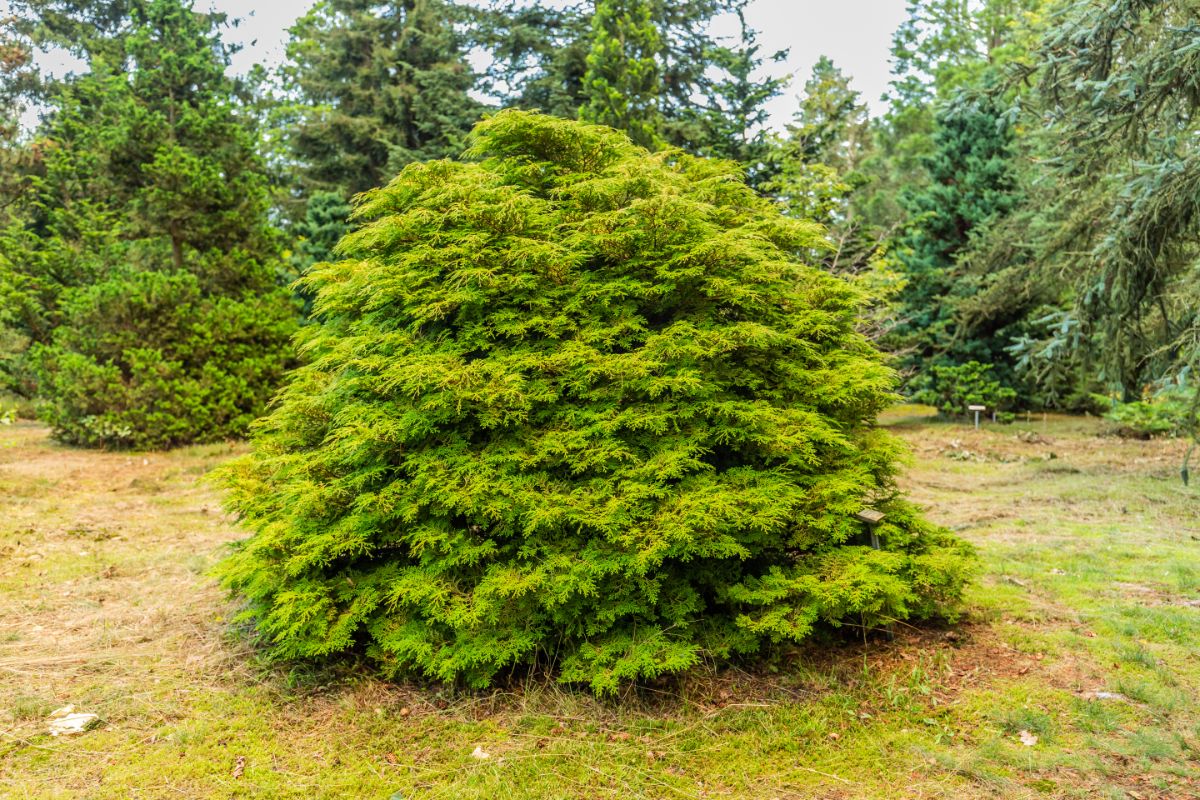Japanese style gardens have become increasingly popular in recent years for their minimalist beauty and calming atmosphere. While Japanese gardening traditions stem back centuries, the core principles remain timeless. A Japanese style garden strives to evoke peace through simple, natural elements arranged in purposeful ways. The careful selection of plants is an integral part of creating an authentic Japanese garden.
I have researched and compiled this list of the top 10 plants that are essential for achieving the look and feel of a classic Japanese garden
1. Japanese Maple (Acer palmatum)
No Japanese garden is complete without the iconic Japanese maple tree. Available in upright, mounding, and weeping forms, maples provide graceful structure and interest throughout the seasons. Delicate leaf shapes and spectacular fall color make them ideal focal points. Dwarf varieties can be used in containers. The maple represents longevity and time passing.
2. Azalea (Rhododendron spp.)
In Japanese culture, azaleas are a sign of new life and the changing of the seasons. They add a splash of color to the garden in the spring and can be trimmed into hedges and borders. Varieties with fragrant blooms are preferred. Azaleas thrive in acidic humus-rich soil. Choose compact sizes for small gardens.
3. Moss (Various species)
Moss carpets the ground and objects in traditional Japanese gardens, signifying age and imperfection. Moss thrives in the shade, covering areas where grass struggles. Bonsai specimens are often planted on moss. Varieties used in Japanese gardens include Polytrichum, Racomitrium, and Hypnum.
4. Bamboo (Various species)
Bamboo plays multiple roles in Japanese gardens. Used for fencing, containers, and architectural details, bamboo represents strength and versatility. Clumping types are ideal for small spaces. Running varieties require containment to prevent spread. Black bamboo creates striking contrast.
5. Camellia (Camellia japonica)
Camellias are broadleaf evergreen trees with shiny leaves and lots of pink, red, and white flowers. They prefer semi-shaded spots with rich, acidic soil. Prune to shape. The leaves and flowers of Camellia symbolize resilience and longevity.
6. Cherry Blossom Trees (Prunus serrulata)
Cherry trees are the quintessential Japanese garden plant. Their fleeting blooms in spring represent renewal and impermanence. Weeping types are featured near water. Prune to shape. Provide full sun and well-drained soil. Some popular varieties are ‘Kanzan’ and ‘Pink Cloud’.
7. Lotus (Nelumbo nucifera)
The sacred Lotus water lily can be grown in ponds or containers. Massive rounded leaves and elegant flower stalks rise above the waterline. Lotus symbolizes purity and transcendence in Japanese culture. Hardy varieties can withstand cold climates.
8. Ferns (Various species)
When planted in groups in shady spots, ferns add airiness and texture. They adapt well under trees and near water features. Japanese painted fern, lady fern, and Japanese tassel fern are some of the types that are used in Japanese gardens. Tough evergreen ferns add year-round interest.
9. Peony (Paeonia spp.)
Japanese art and gardens love peonies because they are the best way to show that you are doing well. Place plants in full sun to partial shade and give them rich soil. Add mulch around the base. Remove spent blooms promptly. Tree and intersectional hybrid peonies work beautifully in small spaces.
10. Ornamental Grasses
Grasses like Hakonechloa, Carex, and Sasa Veitchii add fluid, rippling movement and provide graceful contrast to the landscape.Variegated types create luminous effects. Grasses thrive in moist soil and are effective around water features or used as accents.
When designing a Japanese inspired garden, repetition is key. Select one or two plant varieties within each type and mass plant for cohesion. Include evergreen shrubs, conifers, and bamboo for structural bones. Accentuate focal points like statues and water features. Allow negative space around plants and features to enhance their presence.
While certain plants have culturally symbolic meaning, the ultimate goal is to create a serene sanctuary. Carefully selected plants arranged in simple, minimalist style will transport you to the essence of a Japanese garden. Allow nature’s beauty to unfold and enjoy your personal sanctuary.

1 Japanese quince (Chaenomeles japonica)

| Plant name: | Japanese quince |
| Lighting requirements: | Full sun |
| Water requirements: | Moderate to low |
| Growing zone: | Zones 5 to 9 |
| Special features: | Colorful flowers; Edible |
Quince belongs to the rose family and produces edible fruit that can be used like apples; however, they have a tart flavor and a dense texture. For this reason, quince fruit is often cooked into jams and jellies or baked into pies. But beyond their edibility, there are other reasons why you may want to add quince to your garden.
Japanese quince are small, deciduous shrubs that grow to about 3’ tall by 6’ wide. In spring, these plants bloom bold, scarlet-red flowers that eventually mature into edible quince fruit. Quince is a flexible plant that can grow in full sun or part shade. They can also handle clay soils and drought.
1 Hinoki cypress (Chamaecyparis obtuse)

| Plant name: | Hinoki cypress |
| Lighting requirements: | Full sun |
| Water requirements: | High to moderate |
| Growing zone: | Zones 5 to 8 |
| Special features: | Excellent garden privacy; Good for bonsais |
The Hinoki cypress is a dense, evergreen tree that is commonly grown in Japanese gardens. Full-sized hinoki cypress can get quite large and grow well over 25’ tall; however, you can find dwarf hinoki cypress that can easily fit into smaller garden spaces. Because of their size and growth pattern, hinoki cypress are often used as privacy screens or specimen plants, but dwarf varieties make excellent bonsais too!.
Growing best in full sun, hinoki cypress will thrive in moist and slightly acidic garden beds. While hinoki cypress are generally undemanding plants, they may benefit from occasional pruning in summer to remove wayward stems. These plants are also hardy to zone 5, which means they are appropriate for cool-weather gardens!.
20 Great Plants for Japanese Style Gardens
FAQ
What plants are good for Japanese style garden?
Planting that is simple but beautiful: Many of our most popular plants, like camellias, magnolias, rhododendrons, hostas, bamboo, and Japanese anemones, come from Japan.
What are the 7 principles of Japanese garden?
There are seven main ideas that guide Zen gardens: austerity (Koko), simplicity (Kanso), naturalness (Shinzen), asymmetry (Fukinsei), mystery or subtly (Yugen), magic or the unexpected (Datsuzoku), and stillness (Seijaku). Your Zen garden should promote most or all of these concepts.
What are the three essential elements of a Japanese garden?
Three of the vital elements that form the essence of a Japanese garden are water, rocks, and plants. Water is the major element that defines a Japanese garden. It embodies different meanings depending on its state. Still water signifies a reflection of life, while flowing water represents its continuity.
